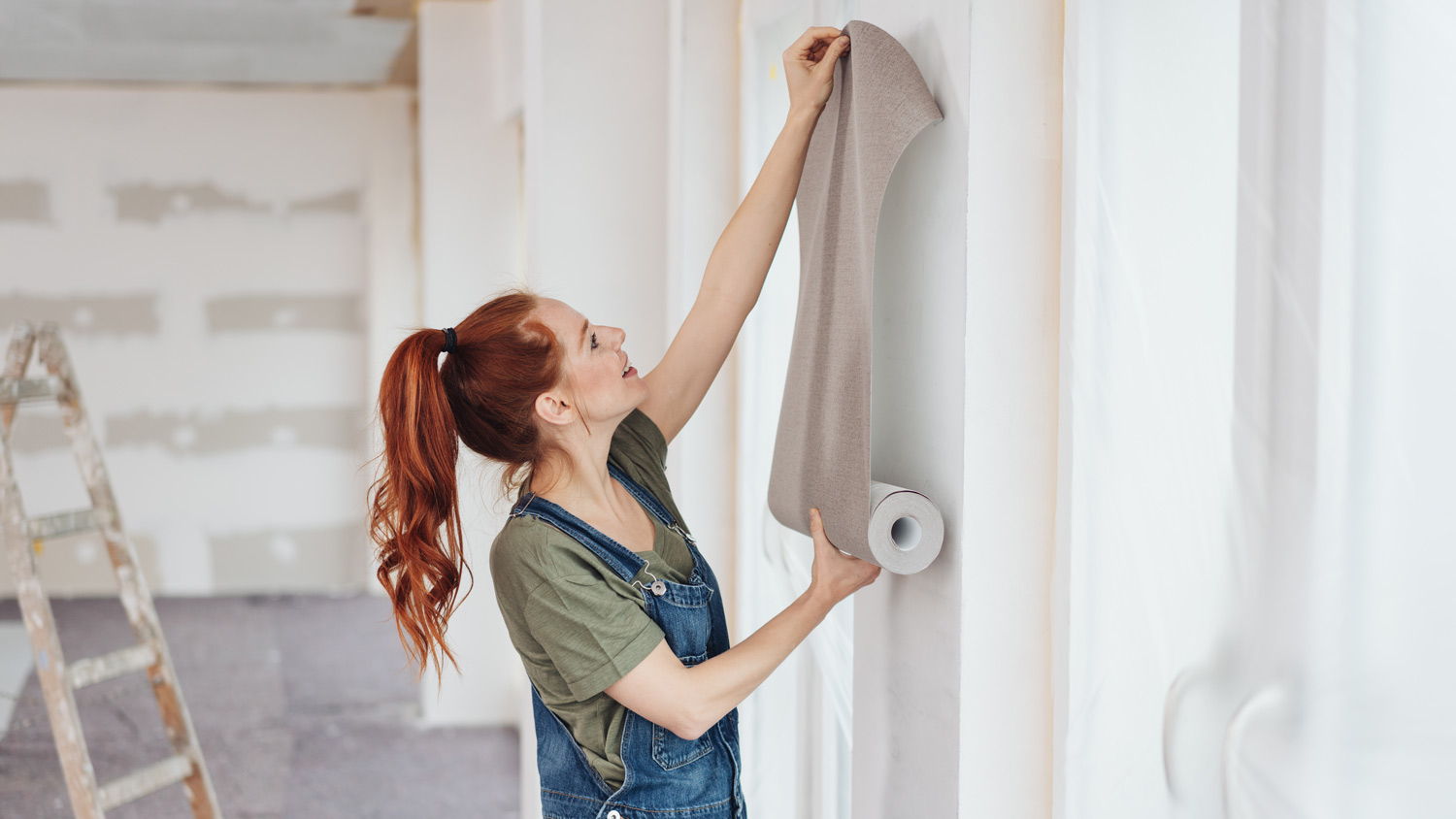
Discover wallpaper installation cost. Learn about material, labor, and project factors to estimate your budget and make informed choices for your home.
Choosing between them can drive you up the wall


Wallpaper lasts about three times as long as paint, making it the more durable option.
Paint is the more popular option and will better impact home value.
Some types of wallpaper are DIYable, but paint is a better option if you’re looking to tackle the project yourself.
Choosing between wallpaper versus paint can be a tough decision, but breaking down the differences and comparing the options based on up-front cost, long-term value, your personal preferences, and durability can help make that decision easier. In this guide, we’ll help you determine which option is best depending on the look you’re going for and your budget.
Wallpaper is often a more expensive option, especially if you need to remove old wallpaper to get the work started. You can paint right over a painted wall with some wall prep, but you generally shouldn’t wallpaper over old wallpaper. If you’re looking to DIY, go with paint, as it’s much easier to get a professional appearance. However, wallpaper lasts for up to 15 years, so it’s the more durable option.
As the name suggests, wallpaper is a decorative paper that covers your walls. Traditionally, you attach it using wallpaper adhesive, but some modern wallpaper comes with adhesive already applied and ready to stick. Wallpaper is available in a variety of colors, patterns, and textures. While it’s possible to DIY the installation, hire a local wallpaper installer if you’re going with traditional wallpaper, as the installation is tricky and messy.
| Pros | Cons |
|---|---|
| Many styles/colors | More expensive |
| Longer lifespan | Harder to DIY |
| Easier to clean | Hard to remove |
Best for:
Homeowners who want a more traditional appearance in their home
People who want a finished wall that requires minimal maintenance
Those looking to add texture and complex patterns to keep their interior interesting
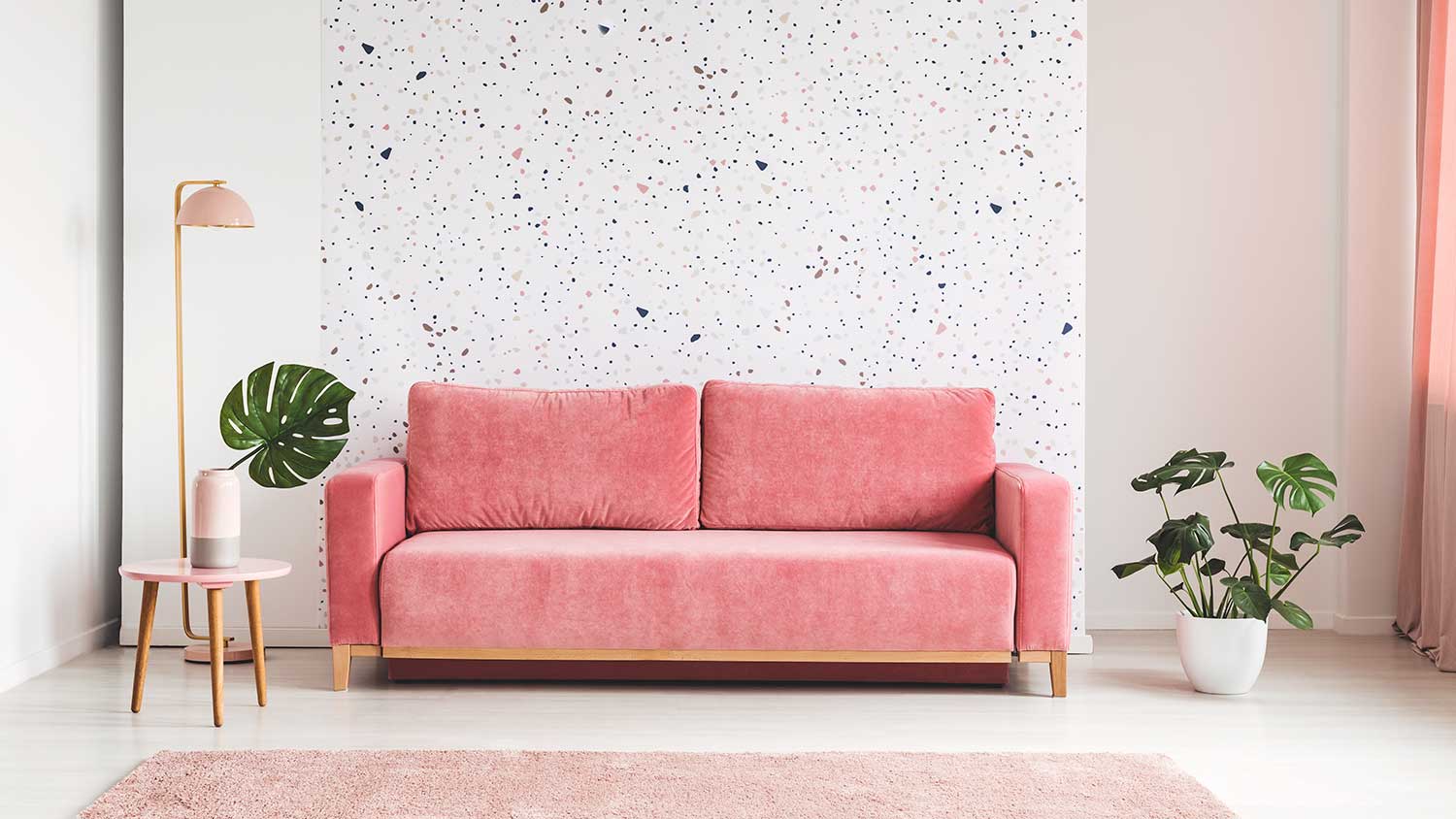
Traditional wallpaper may be difficult to install and remove, but it also lasts for around 15 years, which is about three times as long as your paint will last before needing a new coat. In that time, you’re also unlikely to need to carry out maintenance, and it’s easier to wash and remove stains from wallpaper than a painted wall.
The biggest upside of wallpaper, though, is the customization you get access to. You can buy wallpaper in solid colors, but you can also get patterns that wouldn’t be possible with paint. You can also get textured wallpaper for even more flexibility. Solid colors may be less widely available than paint, but overall, wallpaper design options are more plentiful.
Once your wallpaper arrives, remove it from its packaging and leave it in the exact room you're installing it in for a minimum of 24 hours. This allows your wallpaper to acclimate to that room's environment, reducing the risk of shrinkage and potentially saving you money by not having to order more.
Wallpaper is challenging to install, especially if you go with traditional wallpaper, and it’s more expensive if you hire a local wallpaper installation company. Wallpaper removal is even more challenging, especially if you used traditional wallpaper, and removal will be an added expense you wouldn’t have with paint. You may be able to paint over your wallpaper if you have paintable wallpaper, but in most cases, you’ll have to pay separately for removal.
Wallpaper is also a less popular interior design option, which means the buyer pool that prefers wallpaper when you go to sell your home will be smaller. The resale value for wallpaper is, therefore, often lower than that of paint.
Paint is a liquid that you apply to walls using rollers and brushes. Once it dries, it can provide a water-resistant finish that’s relatively easy to clean and maintain. Painting a wall typically yields a single, solid color, and you can find paint in hundreds of different colors from a variety of manufacturers. Paint is more affordable than wallpaper, especially if you DIY, which is easier with paint.
| Pros | Cons |
|---|---|
| Thousands of colors | Shorter lifespan |
| More affordable | Minimal texture |
| Easier to DIY | Less customization |
Best for:
Homeowners who want solid-color walls and a more modern appearance
People who want to DIY their interior renovations
Homeowners looking to save money while refreshing their interiors

Paint is a more affordable option, especially if you’re willing to put in the work yourself. You can cover around 400 square feet with a single gallon of paint, which costs about $50, while wallpaper for that square footage could cost between $500 and $2,000 for materials alone. Paint is also far easier to DIY, so it’s easy to see those savings.
Paint comes in thousands of color variations that give you plenty of room to customize. Most homeowners prefer the look of paint over wallpaper, so you’ll typically get a better ROI on painted walls. This is largely because paint removal costs will be lower than the cost to remove wallpaper. You can also paint directly over old paint, so removal may not even be necessary.
Paint also stands up better to humidity, so if you’re looking to give your bathroom a fresh look, paint is probably the better option.
Paint lasts for between three and five years before needing a new coat in most cases, which is about a third of what you’d get from wallpaper. Painted walls are also harder to clean and remove stains from, so wallpaper might be a better option in areas that are prone to messes.
Paint comes in thousands of color options, but if you’re looking for texture, your options are limited. You might be able to hire a local painter to get some texture, but for the most part, your walls will be flat.
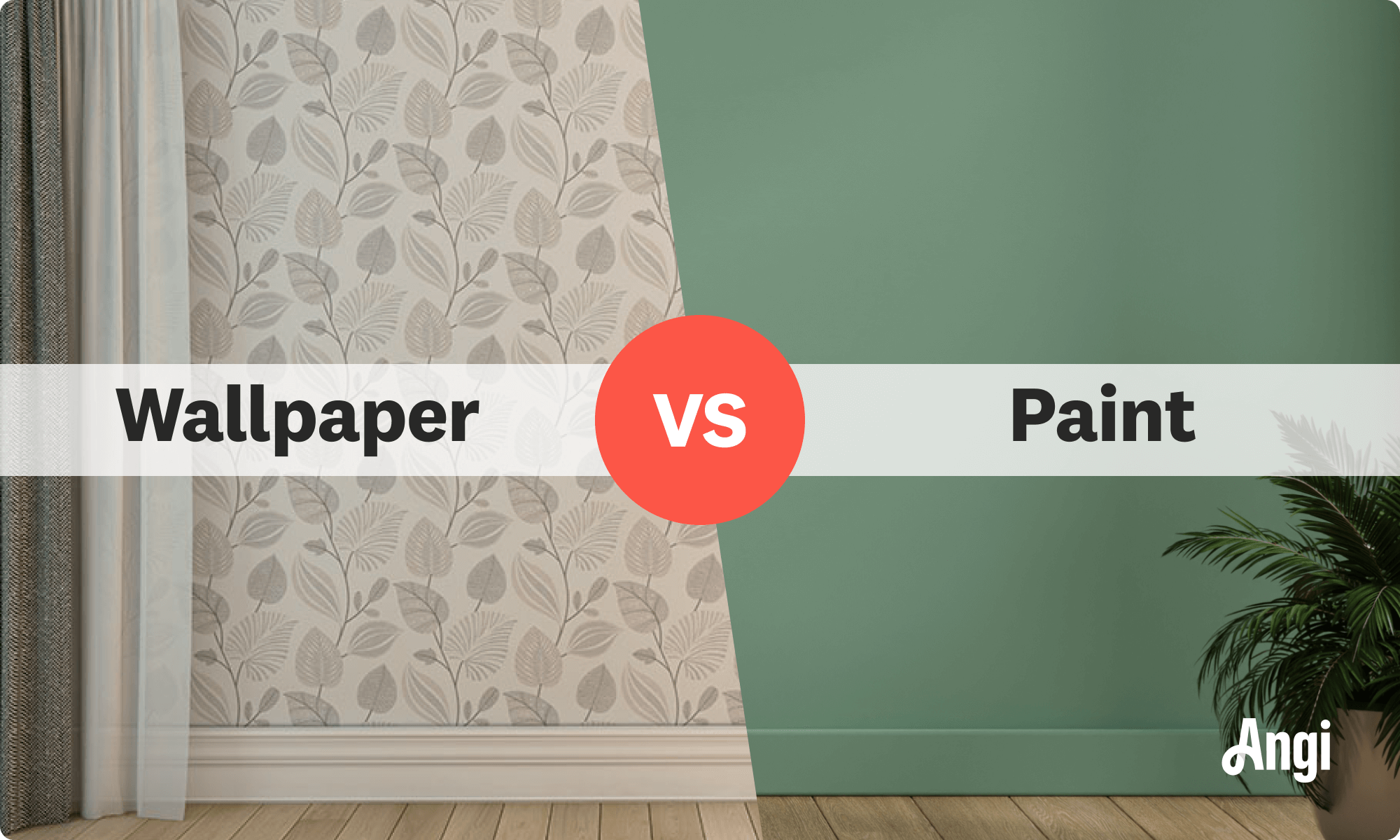
There are a few key differences to consider that can make your decision between wallpaper vs. paint a bit easier.
Most homeowners prefer the more modern appearance of paint over the traditional look of wallpaper. Of course, this is subjective, and some people adore wallpaper and find it more charming. Consider your personal preferences before deciding.
Paint is more affordable whether you do the work yourself or hire a pro. A DIY paint job will cost you around $0.12 per square foot for materials, while the cost to install wallpaper sits between $1 and $5 per square foot for materials. Hiring a professional to paint a room will cost between $2 and $6 per square foot, while hiring a pro to hang wallpaper will cost up to $7 per square foot in labor alone, plus between $1 and $100 per square foot for the materials.
Depending on the wallpaper or paint finish, both options can be relatively easy to clean, but removing stains and grime from wallpaper without damaging the wall is easier. Additionally, wallpaper lasts about three times as long as paint, so maintenance will be more minimal.
Traditional wallpaper will last for around 15 years with minimal maintenance before you need to replace it. A painted wall will often need a fresh coat every three to five years. Overall, you’ll see more durability from wallpaper.
Wallpaper also works best in lower-traffic rooms that don’t get very much moisture. Rooms like kitchens and bathrooms are not ideal for wallpaper since those are considered high-moisture areas and can cause the paper to peel.
Both paints and wallpaper paste can include volatile organic compounds (VOCs), which are bad for the environment and your health. Thankfully, you can buy low- or no-VOC paint as well as wallpaper paste that doesn’t contain VOCs.
Wallpaper and paint both come in a nearly endless list of color options, but wallpaper also gives you options when it comes to texture and patterns, which is especially helpful when choosing an accent wall. Paint is best for uniform, single-color, flat walls. Wallpaper can provide an instant pattern as complex as you’d like, and it comes in a wide range of textures to add even more customization options.
Paint is relatively easy to DIY, and most homeowners will be able to tackle the work without too many issues. Wallpaper can be simple to install if you buy peel-and-stick wallpaper versus traditional wallpaper, but traditional wallpaper needs the experienced hands of a professional. You should prime before installing wallpaper or paint, so the prep work is about the same.
Paint is the preferred option for interior walls, so you’re more likely to find a buyer for your home who sees value in painted walls over wallpapered walls.
From average costs to expert advice, get all the answers you need to get your job done.

Discover wallpaper installation cost. Learn about material, labor, and project factors to estimate your budget and make informed choices for your home.
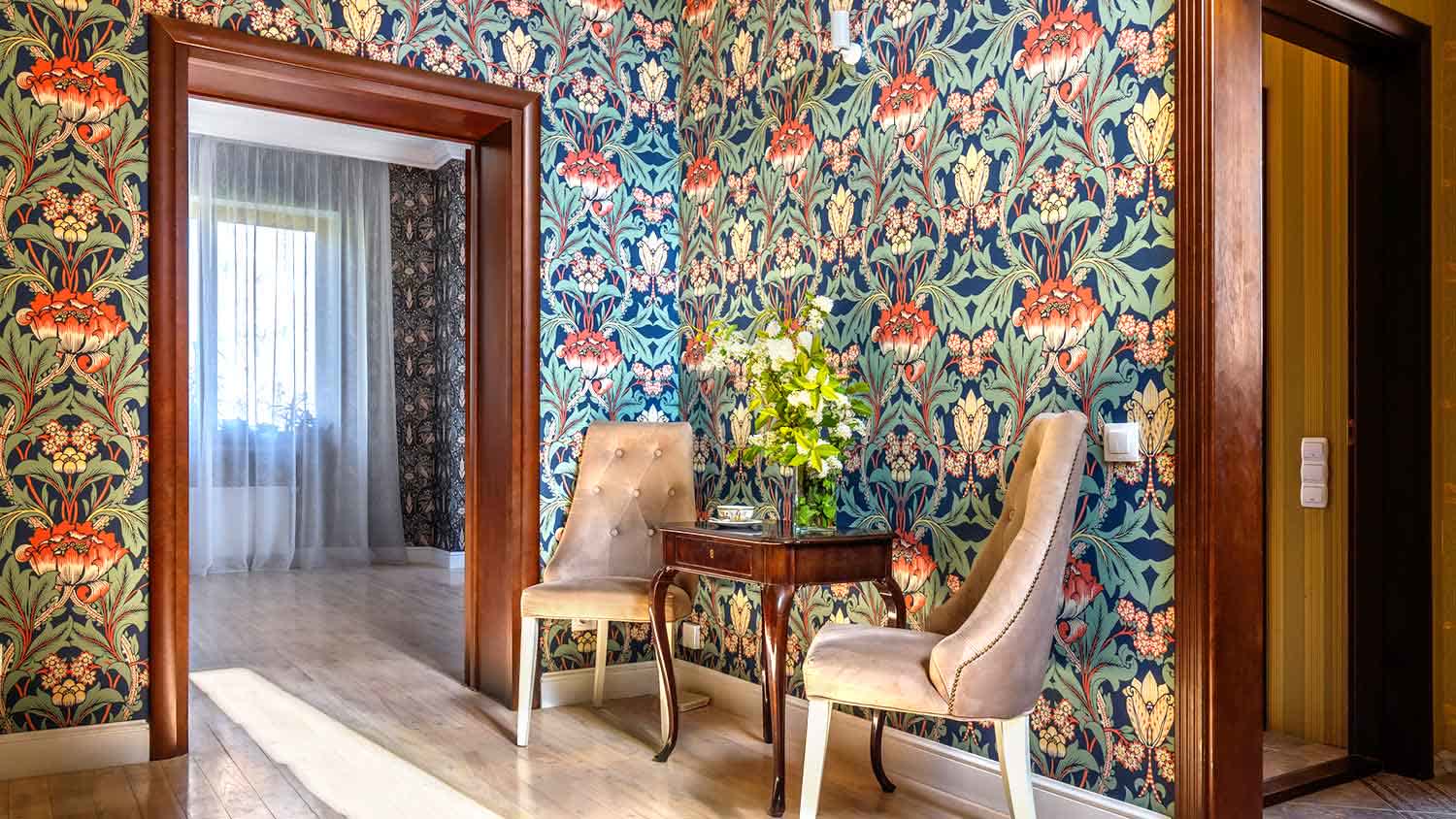
Do you have wood-paneled walls you'd like to conceal? If you're wondering if you can install wallpaper over paneling, the answer is yes. Find out how.
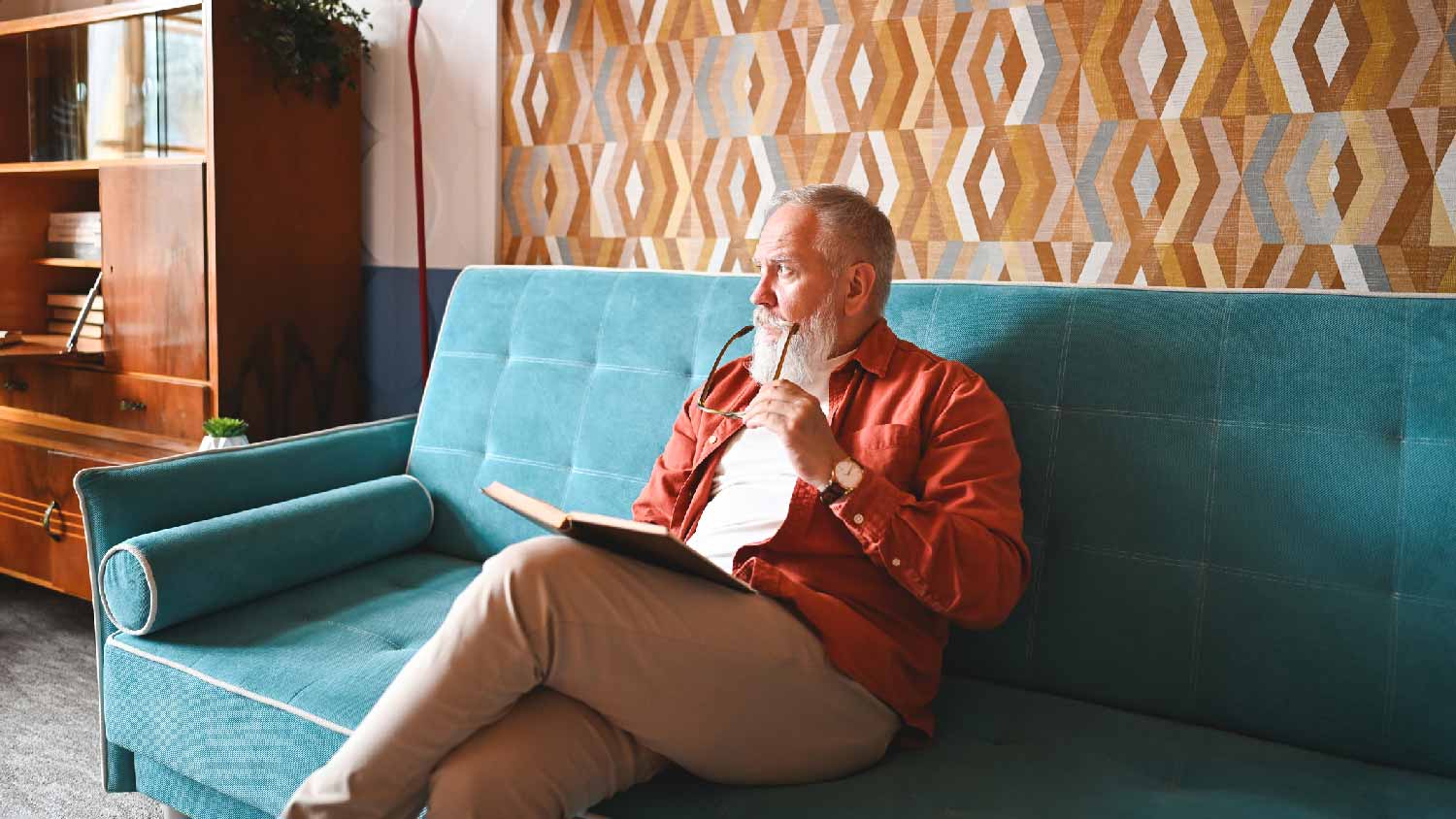
After ripping out old wallpaper, you may be left wondering, “How do I remove wallpaper paste from the walls?” Here’s how to get rid of old wallpaper glue.

How long does peel-and-stick wallpaper last? Learn more about the factors that influence the lifespan of removable wallpaper, including quality and material.
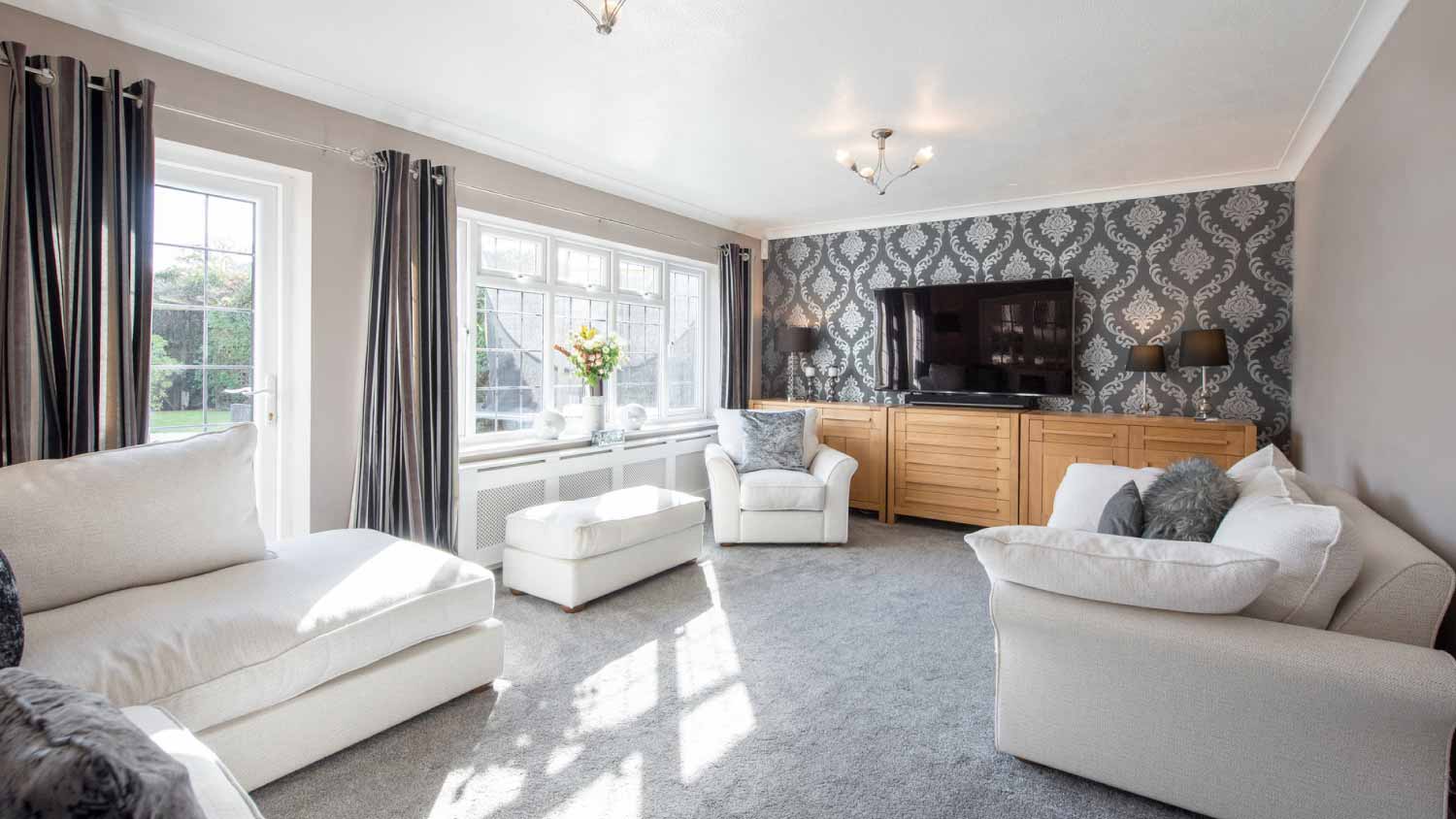
Learning how to install peel-and-stick wallpaper doesn’t have to be a hassle. Figure out which steps you need to take to have a successful DIY installation.

Love the look of wallpaper, but not sure which type is best? Learn the differences between peel-and-stick versus traditional wallpaper in this guide.